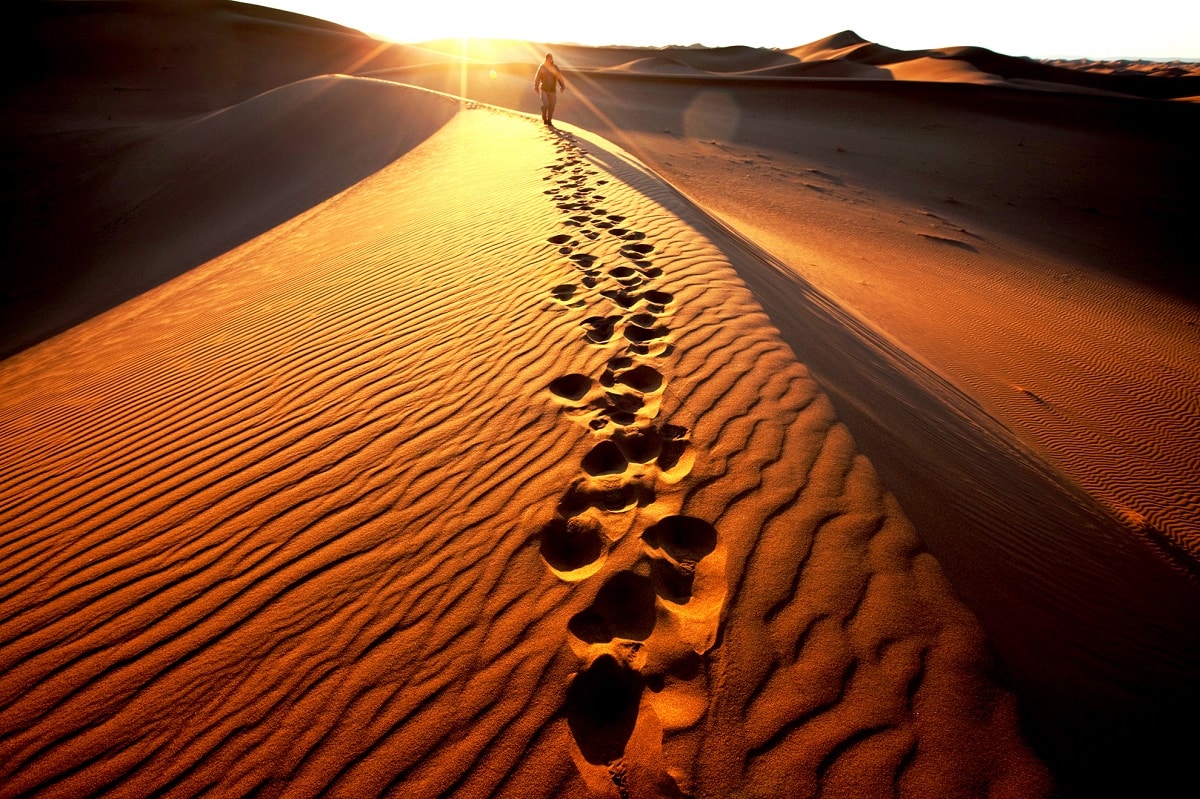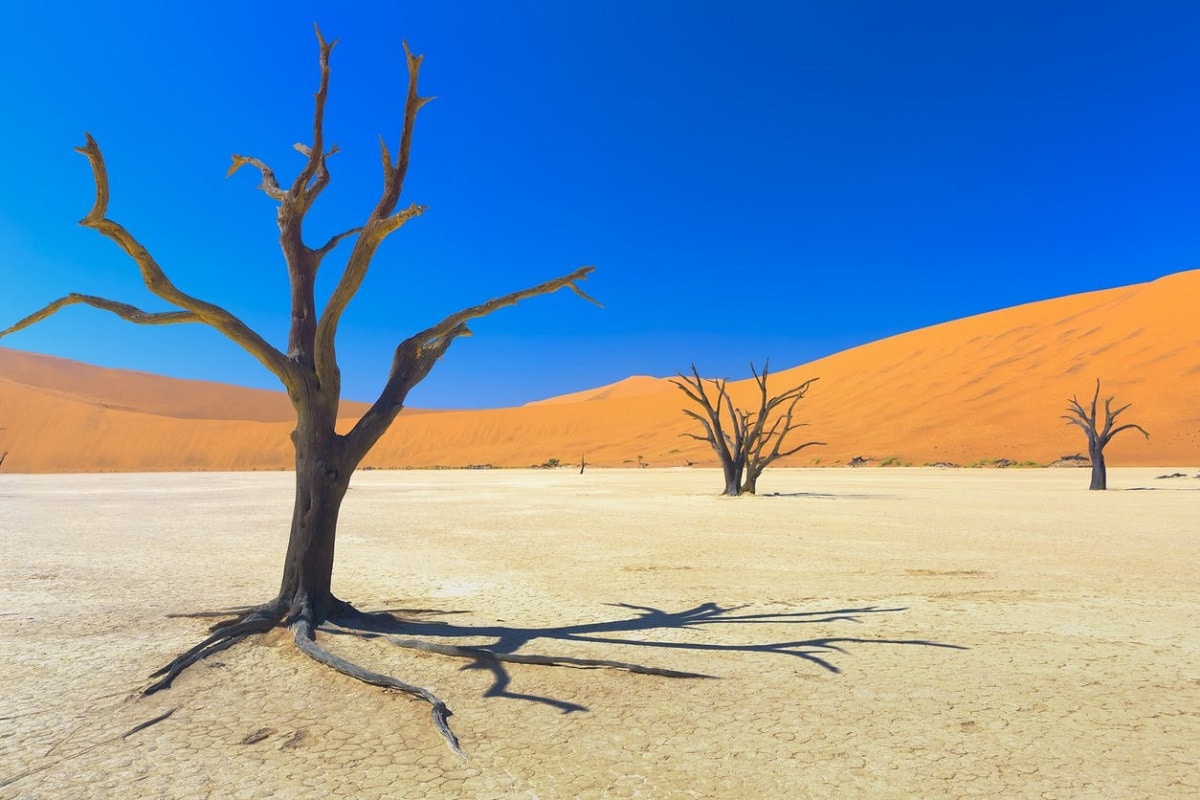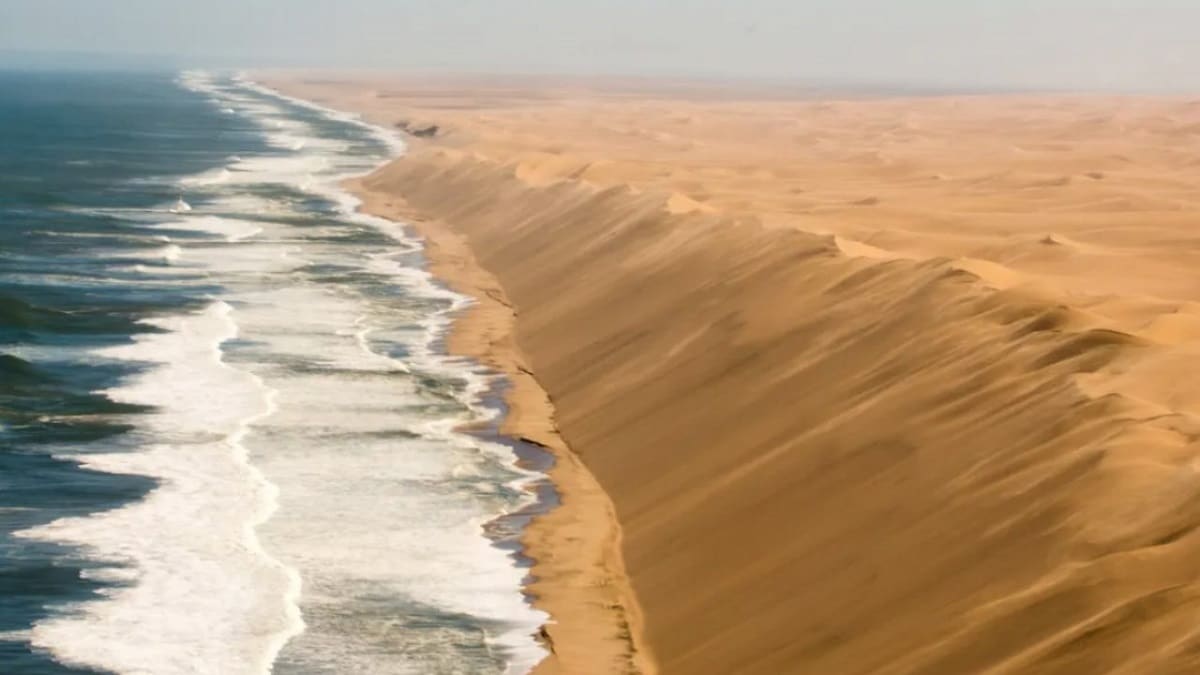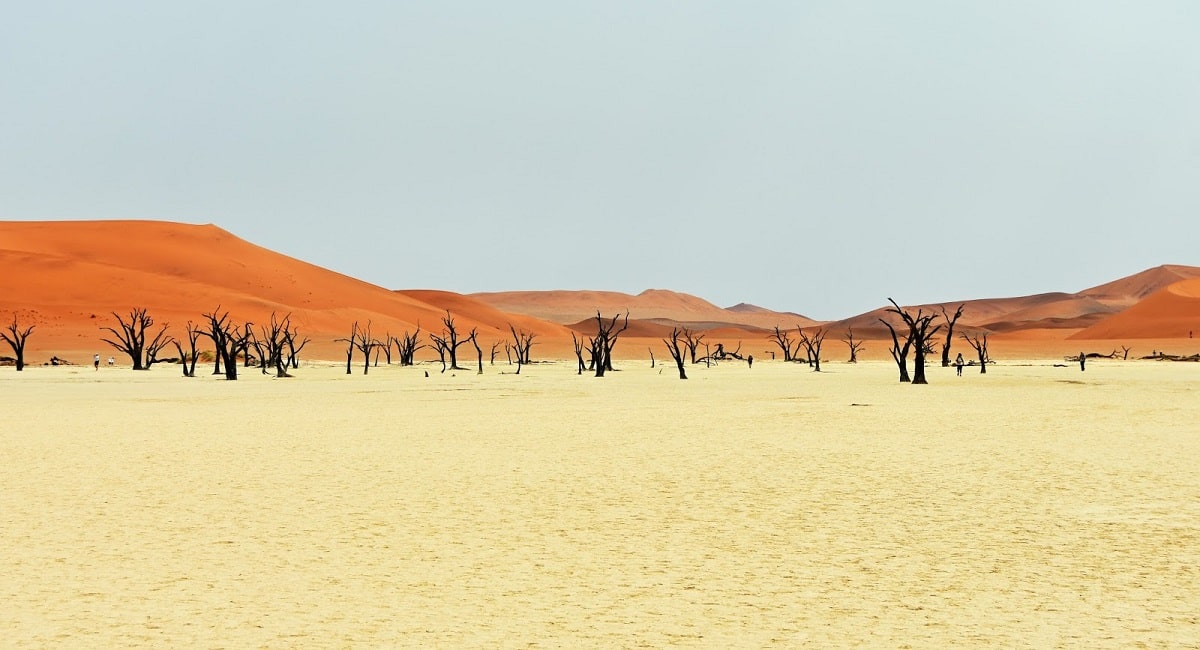
El namibian desert It is known as the land of the highest dunes in the world. It is considered the oldest desert on the entire planet and there is evidence that it already existed during the Tertiary Era, more than 65 million years ago. Around that time is when the dinosaurs became extinct.
For this reason, we are going to dedicate this article to telling you everything you need to know about the Namibian desert, its characteristics, flora and fauna.
Key features

It runs along the coast of Namibia, between the Orange River, which borders the Republic of South Africa to the south, and the Kunene River, which borders Angola to the north. It is 2.000 km long, 1.800 km of which is Namibian territory, although it continues south along much of the Atlantic coast of South Africa, with a width of between 80 and 200 km and an area of close to 80.000 square kilometers.
skeleton coast
It takes its name from the remains of a large number of stranded ships that have been stranded on the coast, creating a ghostly landscape. Getting to the Skeleton Coast is no easy task, in fact it is one of the most difficult areas to reach in Namibia. One way to get there is by road to Torra Bay, which is in the heart of the national park. This is an area that hides hundreds of secrets and stories, and a fascinating destination for the brave. The area is affected by cold ocean currents between dangerous rocks, wrapped in a thick fog, which has been a real trap for whalers.
To make matters worse, those who dared to approach the shore by boat from their boats were left anchored on the beach, unable to return due to the huge waves, blinded by the fog and pushed to their death. A wanderer in a barren desert destined for a true Skeleton Coast, his only hope is to traverse miles of sand to find a swamp. On the coast, hundreds of keels disintegrate in the open.
Corporal Cross

Cabo Cross is located in the West Coast National Tourism and Recreation Area, which ends at the Ugab River. On days of very high tide, the water reaches the dunes. That's why it's so easy to find abandoned vehicles here, like old stranded ships and whale carcasses.
In 1486, it was the first place where Europeans moored on this coast. The Portuguese Diego Cao installed the cross, hence the name, and the Germans sent it to his country in 1893. Today the rocky headland is known for its habitat of 300.000 seals, but the number of tourists and jackals has dwindled to the tens of thousands. These predators come to devour the seal pups, which are born dead, crushed or malnourished when their mothers do not come looking for them. Its spread is due to the abundance of fish in the waters off the coast of Namibia.
The seals consume more fish than the Namibian and South African fleets combined, leading to measures to control the number of populations hunted, although the killings have not solved the problem either.
Namibian desert

Just a few meters inside the Skeleton Coast begins the spectacular Sea of Dunes, considered one of the most beautiful in the world. On the southwestern coast of Africa, the magical area where the sea of dunes meets the ocean in the Namibian desert, commonly known as the "Gateway to Hell," is a bit of a mystery.
These endless red dunes dying into the Atlantic Ocean are formed through a long process of erosion, moving from landmasses further inland. The Orange River carries it inland to the Atlantic Ocean, where powerful currents carry it north, depositing it back on dry land. The red soil that forms the dunes comes from the Kalahari desert.
It is one of the driest places on Earth, with only a few drops of rain per year. Inland winds from the Namibian desert continued to blow, preventing moisture from seawater from being propelled several meters up the coast. The line between the beach and the desert is indefinable.
Thanks to one of its most iconic features, the reddish tone of the sand, it is an inexhaustible source of vast and beautiful landscapes. Its color is due to the oxidation of the quartz crystals that form the grains of sand. These, in turn, form some of the largest sand dunes and unique environments on Earth.
A lake that forms in the area when it rains. Many of them have dried for hundreds of years and are beautiful against a flat white background, surrounded by copper-colored sand dunes three hundred meters high, and decorated with the skeletons of dead acacia trees scattered throughout their interior.
Along the wide valley of Tsauchab, surrounded by copper-colored sand dunes. There is the famous Dune 45, which tourists climb to enjoy the most spectacular sunrise in the desert. The rising light of the sun and the reddish tone of the sand is a unique spectacle that will not be forgotten.
However, its 300m is no match for the 7th tallest dune in the world, which is 380m high. The dunes closest to the sea and parallel to the coast are numbered as if they were streets, but the inner dunes are star-shaped and have a specific number. Dune 45 got its name because it is 45 kilometers from Sesrim. 4 km from this campsite is the canyon of the same name, which is also worth a visit.
Flora and fauna of the Namibian desert
The rich fauna of this place is amazing. Although it can be said that the Namibian desert has not had enough rainfall since the Cretaceous period (about 55 million years ago), many species are still managed. They survive among them: snakes, lizards, hyenas and endemic insects; in an area with little wind, where the wind blows over the edible remains, only a few drops fall each year, evaporating as fast as a cloud.
I hope that with this information you can learn more about the Namibian desert and its characteristics.
It is so wonderful for me to know these beauties of our mother nature on this Blue Planet, they are relevant topics that enrich our general culture. Greetings